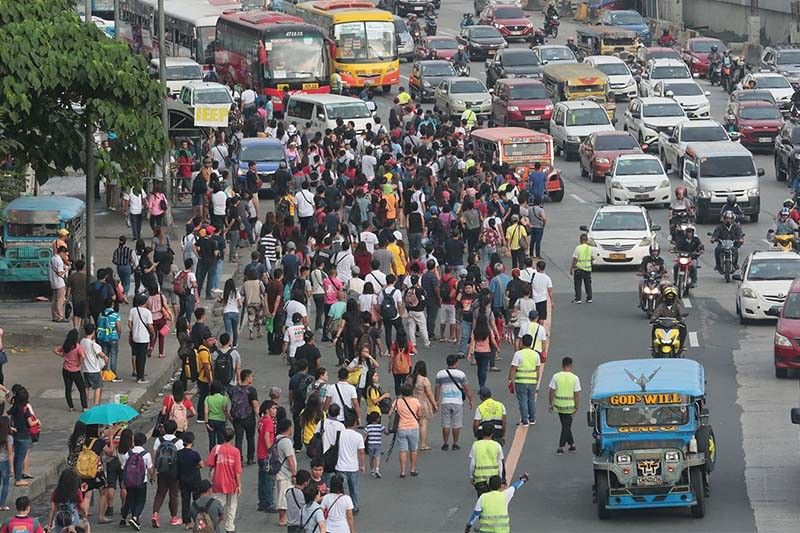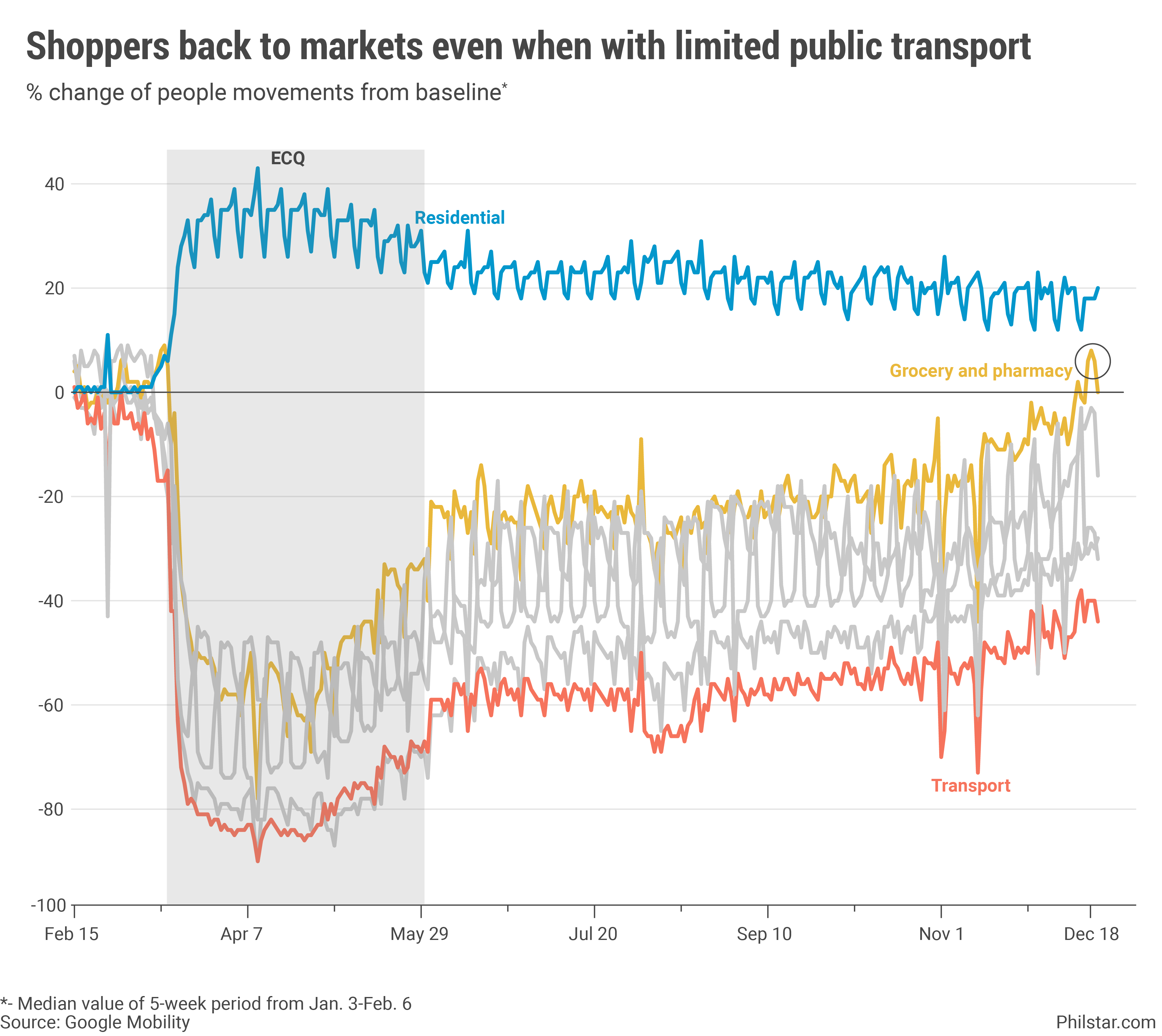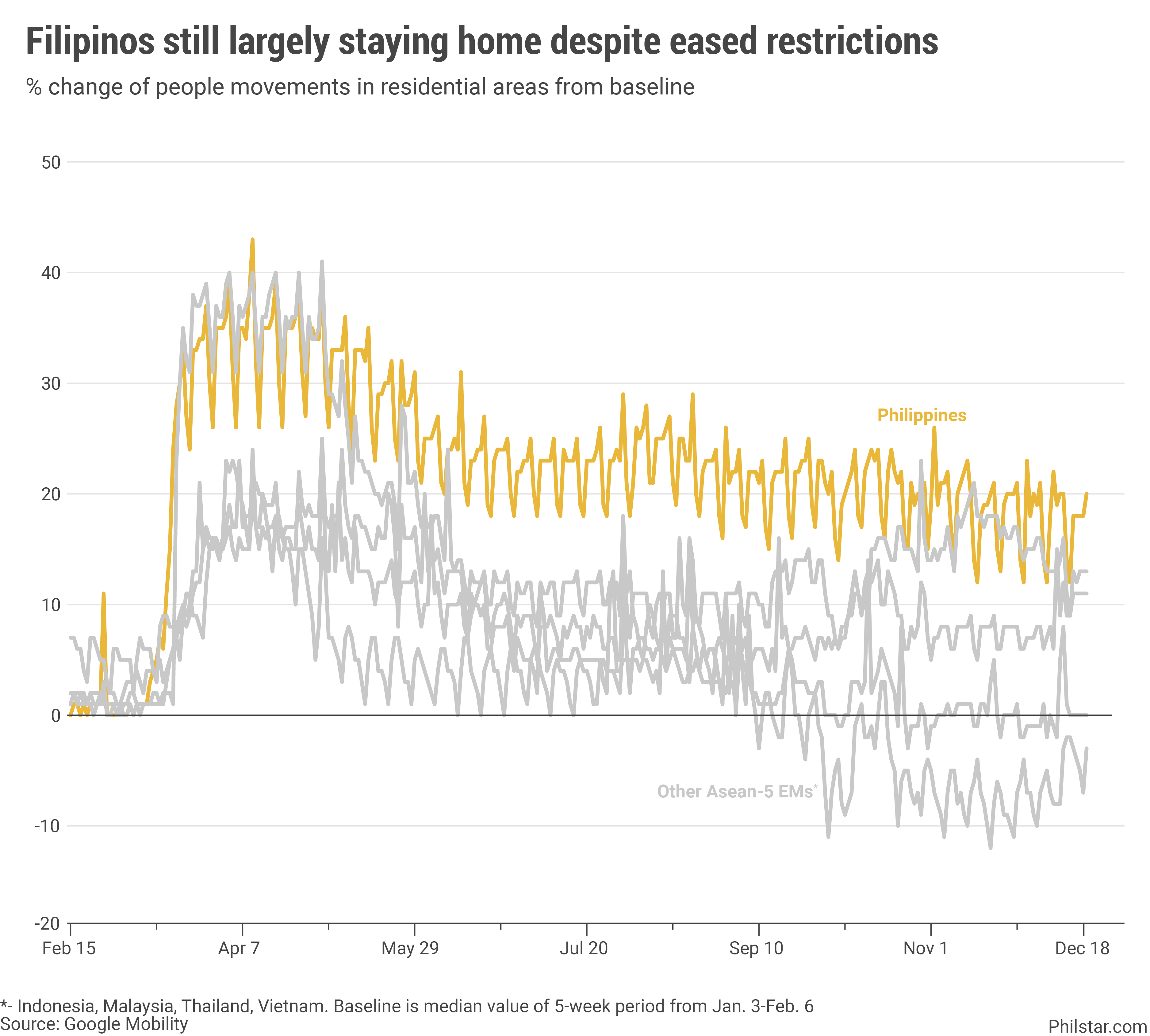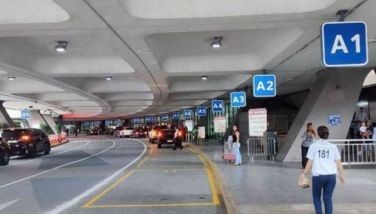Consumers, asked to go out for economy, heed calls to shop for Christmas

MANILA, Philippines (UPDATE 10:30 a.m., Dec. 25) — Christmas pushed home-stay Filipinos out of their homes to go shopping, giving the consumer-driven economy a shot in the arm and keeping a last hurrah from pandemic weakness very much alive.
This is good news for economic officials banking on the typical spending splurge during the yuletide to restart an economy set for its deepest slump on record. But analysts cautioned against celebrating early, saying most people are still struggling to reach destinations even as cars bring back Metro Manila’s horrendous holiday traffic.
“Everything boils down to consumer confidence though some store owners also point out that customers appear to be turned off by having too much protocols on filling out forms,” said Jose Ramon Albert, senior research fellow at the Philippine Institute for Development Studies.
“Whether that is sustained will all depend on people’s behavior. We are on uncharted territories,” he said in a phone interview.
At the same time however that economic officials are asking people to dine out, others in the Duterte administration are encouraging people to stay indoors over risks gains in controlling the coronavirus spread will be reversed. Already, independent researchers noted that cases in Metro Manila are experiencing an early uptick.
As of December 18, Google Mobility data showed people movements in groceries and pharmacies were at the same level during the baseline day. For this purpose, Google uses as baseline the median value of movements during the 5-week pre-pandemic period, January 3 to February 6. Thus, an increase in mobility signals people movements are rising to levels before lockdowns were enforced, while a decrease shows otherwise.
Three days before that, foot traffic in the same areas went up 8% from the baseline, the first time it did since the government relaxed one of the world’s longest lockdowns in June. To compare, movements in groceries and drugstores slumped 68% from the baseline last April 10 even when they were exempted from prohibitions.

For Jedd Ugay, transport economist at AltMobilityPH commuter group, the latest data is unsurprising. “Essential trips” to stock up on food and medicines and stay healthy has forced many “to find ways” to get to their destinations with half of public transport crippled.
Indeed, the Duterte administration has held off from completely allowing all jeepneys and buses to ply the roads over fears typically cramped public transport would spread coronavirus contagion. Yet that decision had also triggered long lines in terminals, and Ugay said it’s about time public transportation is augmented.
“It is better for the economy and health to provide safe and sufficient transport options rather than restrict mobility,” he said in a text message.
“This just means that public transport is insufficient, and many of the grocery/pharmacy trips are being served using other modes (probably walking, biking, private car/motorcycle,” Ugay explained.
Unrestricted car owners
Google data showed that while people are reaching markets, movements in transport terminals dropped 44% from January and February. The pace of decline may have moderated from as much as 60% in May 31, but Robert Anthony Siy III, head of transport at Pasig local government, cautioned against reading too much on the data.
“The data showed the set of people that this mobility data tracks. Mostly smartphone users, those earning higher income, are more likely own cars,” Siy said in a separate text message. Transport economists had estimated that at least 80% of Filipinos do not own cars, which Siy said are “practically (having) no more mobility restrictions.”
“We are planning a network of safe cycling routes throughout the city to encourage shifts away from private motorized travel,” he said of Pasig’s transport plans.
In calculating mobility, Google uses locational trackers in android phones to track people. This is also done by Apple Inc. on their iOS users, and current results from both firms bear similarities. Apart from transport, movements in retail and recreation remained down 32% from baseline as of December 18, although an improvement from 65% drop in November 12. Foot traffic in workplaces also declined 28%.
Over-all though, policymakers such as those from the central bank are considering these mobility data in crafting policies so seeing people going out may give encouragement the economy is getting the impetus it needed from holiday spending.

But if data is also to be believed, more work needs to be done. Mobility in residential areas remained up a fifth from the January-February baseline, indicating that most Filipinos are staying indoors. The increase in residential movements also remained the highest among Asean-5 developing peers, while the decrease on those in transport areas was also the worst in the region.
For Ugay, more public transport is the solution. “It is more expensive to undertake trips now than before COVID-19 due to the lack of public transport,” he said.
Editor's note: Clarified the baseline period
- Latest
- Trending






























